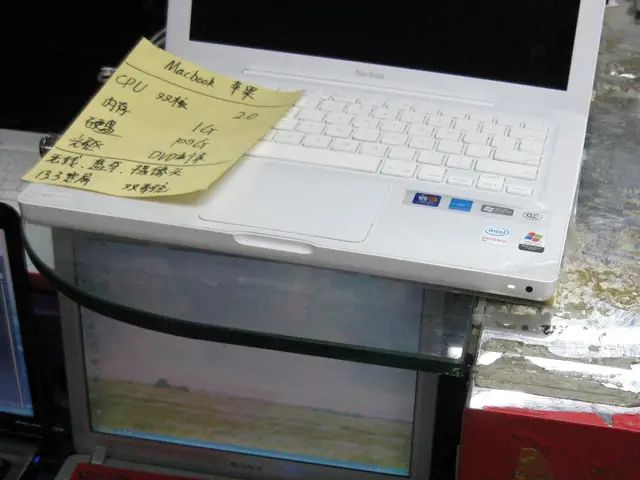Increasing Demand for Rare Earth Elements by 2035: Will the United States Keep Pace with China?
The race to diversify the global supply chain for Rare Earth Elements (REEs) is gathering momentum, with the United States leading the charge. This shift, deemed crucial for electric vehicles, renewable energy, national security, and economic growth over the next decade, is fraught with challenges but promises a more sustainable and cost-effective local supply, particularly for high-value magnets.
In the United States, efforts are focused on reducing dependency on China's dominance in the REE market, which accounts for over 80% of global processing. The Department of Defense has committed over $439 million since 2020 to strengthen domestic production and refining infrastructure. Companies like MP Materials, for instance, have secured funding to double neodymium-praseodymium (NdPr) magnet metal production. MP Materials has invested nearly $1 billion to establish a complete U.S.-based rare earth mine-to-magnets supply chain, including a processing plant in Texas producing NdPr metal[1][4].
Strategic partnerships and trade are another key aspect of this diversification. The U.S. is forging alliances with countries such as Saudi Arabia and Brazil to diversify processing supply chains outside China. However, these partnerships, while promising, are not seen as long-term solutions due to the complexities involved in export restrictions[1][2][3][4].
Innovations in processing and recycling technologies are also playing a significant role. Companies like American Resources and Ucore Rare Metals are advancing eco-friendly, low-cost separation technologies to bypass Chinese midstream bottlenecks. Recycling rare earths from used electronics, EV motors, and industrial equipment is seen as a fast-track, sustainable supply method to supplement primary mining[1][2][5].
However, this transition is not without its challenges. Long regulatory processes delay mine and processing facility development, hampering the scaling of domestic supply chains. Building vertically integrated mining, refining, and manufacturing facilities requires substantial investment, posing high financial risks especially for private investors. Technological and capacity bottlenecks persist, with insufficiencies in refining and processing capacity outside China[2][4][5].
Geopolitical risks and market volatility also loom large. China's export restrictions and global trade tensions add uncertainty, and the market for REEs remains volatile with fluctuating prices, impacting investment attractiveness[2][5].
Despite these challenges, the outlook for the global REE market is promising. The market is expected to grow from 196.63 kilotons in 2025 to 260.36 kilotons by 2030, at a 5.8% Compound Annual Growth Rate (CAGR). The magnet application segment will lead this growth with a forecasted CAGR of 8.02%, due to the rising demand for NdFeB magnets in EV motors and wind turbines[6].
Manufacturers are also taking steps to minimize REE use where possible. This shift towards sustainability is not just about securing a steady supply of these critical elements, but also about reducing the environmental impact of their production and use.
As the world moves towards a cleaner, more digital future, the importance of a resilient REE supply chain cannot be overstated. The journey towards diversification is a complex one, but with concerted efforts and innovative solutions, it is a challenge that can be met.
References:
[1] https://www.reuters.com/business/energy-environment/us-rare-earths-company-mp-materials-secures-550-million-defense-funding-2021-06-16/ [2] https://www.sciencedirect.com/science/article/pii/S221462962030227X [3] https://www.reuters.com/business/energy-environment/us-rare-earths-company-mp-materials-secures-550-million-defense-funding-2021-06-16/ [4] https://www.forbes.com/sites/danielriccio/2021/06/16/us-rare-earths-company-mp-materials-secures-550-million-defense-funding-to-double-production/?sh=20b0b8c67260 [5] https://www.sciencedirect.com/science/article/pii/S221462962030227X [6] https://www.grandviewresearch.com/industry-analysis/rare-earth-market
- Investment in the clean energy industry is crucial for the future, as companies like MP Materials, supported by the Department of Defense, are investing heavily in renewable energy technologies, such as rare earth magnets, to establish domestic production chains.
- Innovations in technology, such as eco-friendly separation techniques, are being developed by companies like American Resources and Ucore Rare Metals, aiming to recycle rare earths from electronic waste, supporting a more sustainable supply of these elements.
- Despite the challenges, such as long regulatory processes and financial risks, the global market for rare earth elements is expected to grow, with the magnet application segment leading the growth, driven by the increasing demand for clean energy technologies like electric vehicles and wind turbines.




